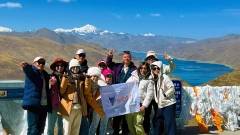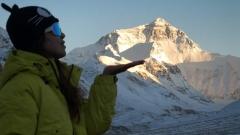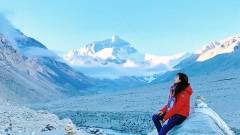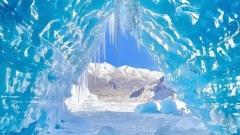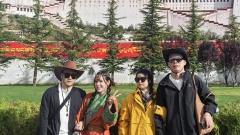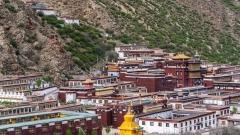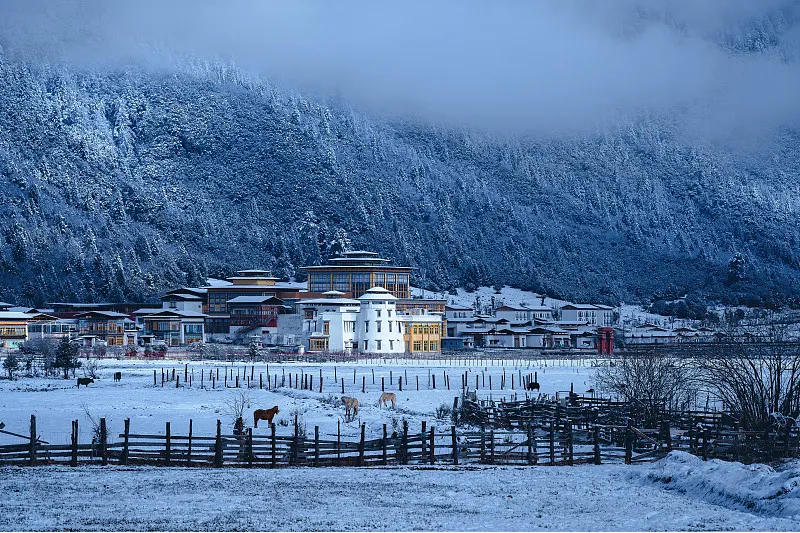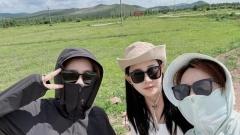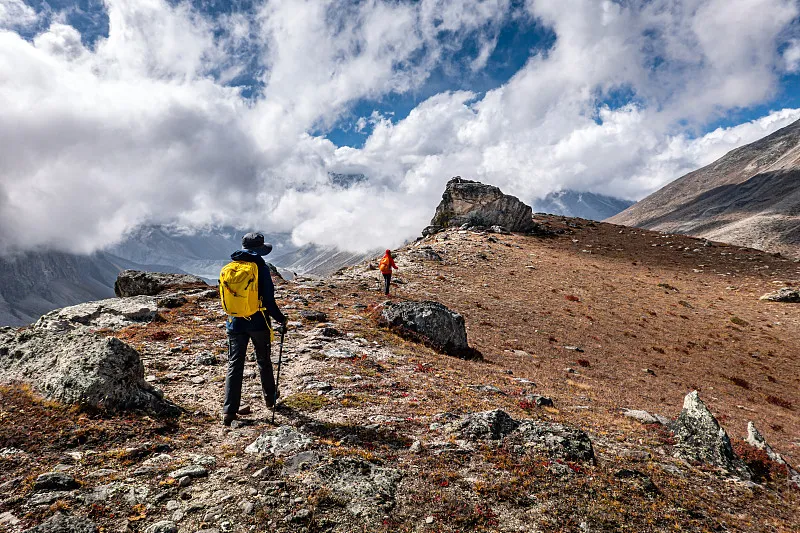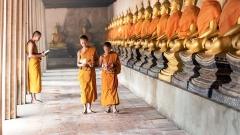Nestled against the awe-inspiring backdrop of Mount Everest’s northern face, Rongbuk Monastery sits at an altitude of 5,154 meters (16,906 feet), making it the highest monastery in the world. Located in Tingri County, Shigatse Prefecture, Tibet, this remarkable sanctuary has drawn pilgrims, explorers, and travelers for over a century.
Rongbuk Monastery Tibet’s Practical Information for Travelers
Rongbuk Location and Access
- Where: Tingri County, Shigatse Prefecture, Tibet Autonomous Region, China
- Altitude: 5,154 m (16,906 ft)
- Opening Hours: 09:00–16:00 daily
- Admission Fee: CNY 35 per person
How to Get to Rongbuk
- By Tour Group: The easiest way is to join a guided tour from Lhasa or Shigatse. China Dragon Travel and other reputable agencies offer packages that include permits, transportation in rugged 4×4 vehicles, and local guides.
- Independent Trekking: For the adventurous, a multi-day trek from Dingri (Tingri) County winds through high-altitude plains and yak pastures. This approach requires careful acclimatization and permits obtained in advance.
Best Time to Visit Rongbuk
- Ideal Seasons: April–May and September–October
- Why: During these months, the weather at high altitude is relatively mild, with daytime temperatures above freezing and clear skies that afford the best views of Everest and the surrounding peaks.
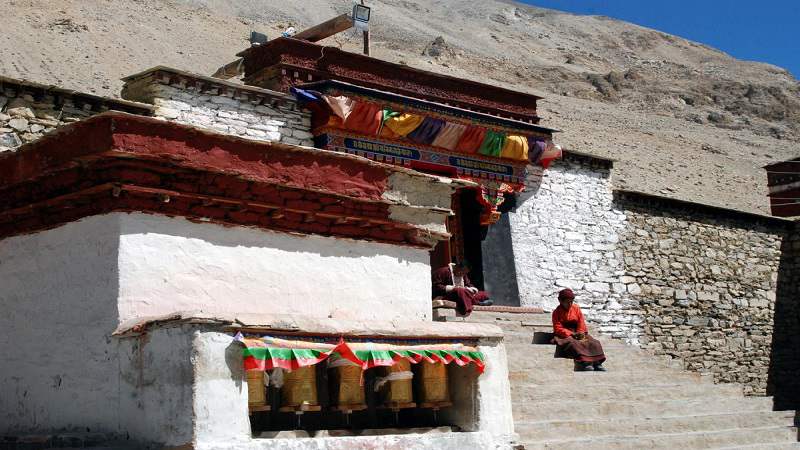
Rongbuk Monastery
Rongbuk Monastery Tibet’s Rich History
Established in the early 20th century under the Nyingma sect of Tibetan Buddhism, Rongbuk Monastery occupies a place of both religious significance and natural grandeur. While historical records about its founding are sparse, oral traditions speak of its spiritual roots extending even earlier. The valley in which the monastery resides—known as Rongbuk—was once called the “sanctuary of the birds.” A strict prohibition on hunting ensured that wildlife thrived; early British explorers in 1921 noted that wild blue sheep and other creatures would descend right to the monastery’s threshold, seemingly unafraid of the human presence.
When the first British expedition reached Rongbuk in 1921, they encountered a bustling community of hundreds of lamas and lay pilgrims engaged in meditation and ritual. They were unable to meet the head lama, who had retreated into a mountain cave for a year-long solitary meditation. This practice of cave retreats for hermits, subsisting on barley and water delivered once daily, remains a testament to the monastery’s austere spiritual traditions.
The cultural revolution of the 1960s led to the razing of the original monastery, leaving only ruins amid the icy winds. However, in the late 1980s and early 1990s, Tibetan artisans and devotees began the painstaking process of rebuilding. Today’s cluster of whitewashed walls, crimson-trimmed roofs, and golden stupas evoke the monastery’s former glory. Intricate murals depicting Buddhist deities and local legends have been painstakingly restored, inviting modern visitors to appreciate the artistic achievements of Tibetan monastic culture.
Architectural Highlights and Sacred Spaces of Rongbuk Monastery Tibet
Walking through the monastery gates, you’ll first notice the large stupa—often the centerpiece of countless photographs, with Everest’s summit piercing the sky behind it. The main assembly hall, with its ornate pillars and dazzling Buddhist iconography, is where monks gather for prayers and ritual dances. Flanking the hall are smaller chapels and hermitage caves, some still used by those seeking extended meditation retreats.
The upper floors of the monastery display a series of vibrant murals. Scenes range from the life of Shakyamuni Buddha to local folk tales, rendered in deep reds, blues, and gold. Pilgrims often circumambulate the chapels, spinning prayer wheels and chanting mantras, while fluttering prayer flags catch the wind to carry prayers skyward.
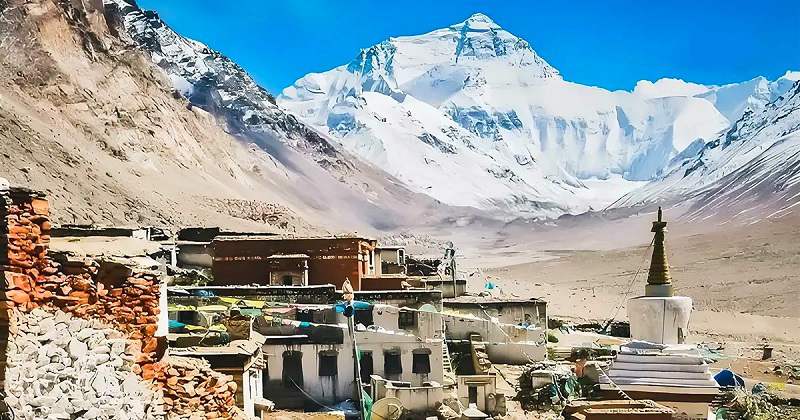
Rongbuk Monastery
The Majesty of Rongbuk Glacier
Beyond the monastery grounds lies the famed Rongbuk Glacier—the largest of the glacial formations encircling Everest’s northern slopes. Stretching 26 kilometers with an average thickness of 120 meters (and over 300 meters at its deepest), the glacier feeds into the icy tributaries that form the Rongbuk River, whose frigid waters flow just below the monastery.
A short trek from the monastery brings you onto the glacier’s moraine, where the earth underfoot is a mixture of ice, gravel, and ancient rock. This dramatic landscape, framed by icy cliffs and the distant crimson glow of Everest at dawn or dusk, is a photographer’s paradise. In clear weather—best experienced in April, May, September, or October—you’ll witness the mountain’s textures in every shifting light.
Festivals and Monastic Life of Rongbuk Monastery Tibet
Saga Dawa Festival (Buddha’s Birth Celebration)
Starting on the 15th day of the fourth month in the Tibetan calendar (usually May or June), Saga Dawa commemorates the birth, enlightenment, and death of Shakyamuni Buddha. At Rongbuk, monks and nuns perform masked cham dances in front of the main assembly hall, their colorful costumes swirling in ritual movement. Pilgrims join in prostrations and prayer recitations, creating an atmosphere of shared devotion against the silent majesty of Everest.
Tibetan New Year Ceremonies
Celebrated in late December by the Tibetan lunar calendar, Losar ushers in the year with incense offerings, butter-lamp lighting, and protective rituals to placate wandering spirits. At Rongbuk Monastery, monks don traditional masks and perform sacred dances to cleanse the space and invite prosperity for the coming year.
Monks and Nuns Living in Harmony
Uniquely, Rongbuk Monastery accommodates both male and female practitioners within its compound. This shared residence underscores the monastery’s inclusive spirit. Visitors may glimpse nuns sweeping courtyard stones or monks chanting sunrise prayers, a testament to the monastery’s living traditions.
Accommodation and Local Cuisine of Rongbuk Monastery Tibet
For those aiming to summit Everest or reach the Base Camp situated just 8 km from Rongbuk, the monastery offers basic lodging in communal rooms accommodating 4–5 people. While amenities are modest—expect simple bedding and shared toilets—the experience of waking to an Everest sunrise from your window is unparalleled.
A small Tibetan-run restaurant near the entrance serves hearty soups, tsampa (roasted barley flour), and yak butter tea. Prices here are higher than in lower-altitude towns, so consider bringing your own high-energy snacks and instant meals to supplement.
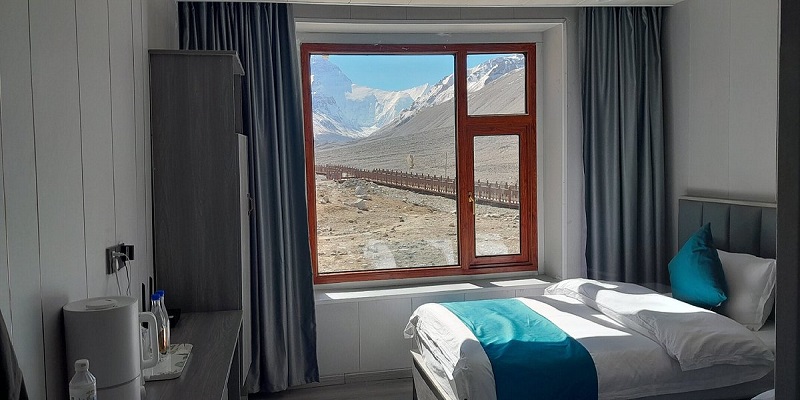
Rongbuk Monastery Accommodation
Why Rongbuk Monastery Should Be on Your Bucket List
- Unparalleled Views: Few locations in the world offer such a dramatic framing of Everest directly behind a sacred monument.
- Living Spirituality: Witness centuries-old monastic rituals still practiced in pristine isolation.
- Unique Festivals: Time your visit for Saga Dawa or Losar to experience authentic Tibetan ceremonial dances.
- Adventure and Solitude: The remote setting rewards those who trek or drive across the Tibetan plateau with a profound sense of place.
Plan Your Journey with China Dragon Travel
At China Dragon Travel, we specialize in crafting immersive Tibet adventures. From permit acquisition and expert guides to tailored itineraries that include Lhasa, Shigatse, and the trek or drive to Rongbuk Monastery, our team ensures every detail is handled. Discover the spiritual heart of Tibet, stand in the shadow of Everest, and create memories that will last a lifetime. Contact China Dragon Travel today to explore our Rongbuk Monastery tour packages, complete with comfortable accommodations, cultural experiences, and unmatched local expertise.



